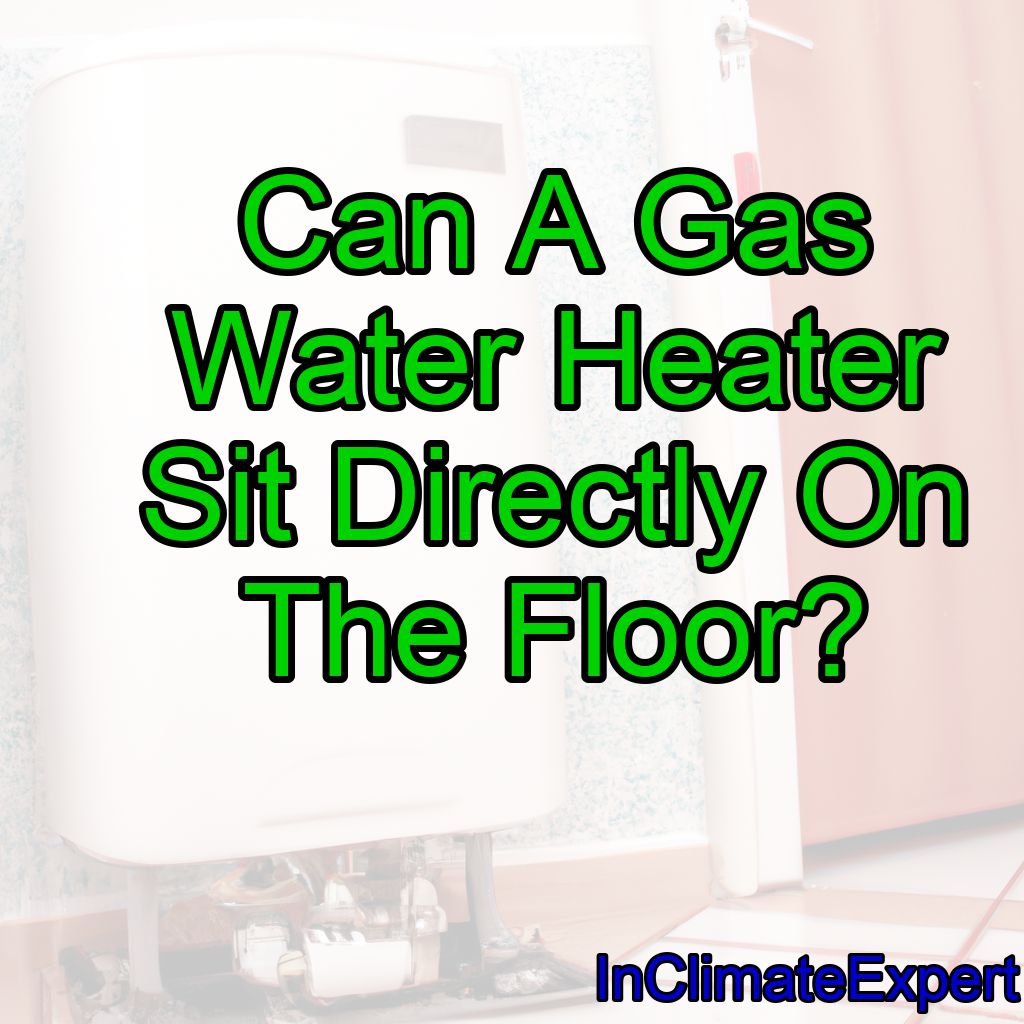Generators are becoming increasingly popular among homeowners and businesses as a backup power source during outages. However, many people overlook the importance of proper ventilation for generators. Without adequate ventilation, generators can pose a serious safety hazard and cause damage to the generator itself.
A generator needs at least 2-4 square feet of ventilation per 1,000 watts of power output.
In this article, we will explore how much ventilation a generator needs to operate safely and efficiently. We will discuss the potential dangers of inadequate ventilation and provide tips for ensuring your generator is properly ventilated.
Whether you are using a portable or standby generator, understanding the importance of ventilation is crucial for the safety and longevity of your equipment.
Generator Ventilation Requirements
Generators are an essential part of many industries and households, providing backup power when electricity is unavailable. However, generators can also produce dangerous fumes that can be harmful to both humans and the environment if not properly ventilated. As a result, it’s crucial to ensure that your generator has enough ventilation to keep everyone safe.
The amount of ventilation required for a generator depends on several factors, including:
- The size of the generator
- The type of fuel it uses
- The location where it is being used
Generally speaking, larger generators require more ventilation than smaller ones because they produce more exhaust fumes. Furthermore, diesel generators require more ventilation than gasoline generators due to their higher exhaust temperatures and emissions levels.
Finally, generators used indoors or in enclosed spaces need more ventilation than those used outdoors because there is less air circulation.
Factors Influencing Ventilation Requirements
Location and environment can have a big impact on the amount of ventilation a generator needs, so it’s important to consider where and how it will be used. The type of generator you choose also matters – diesel generators will usually require more ventilation than natural gas ones. Finally, the load requirement of the generator should be taken into account; the higher the load, the more ventilation it’ll need.
Location & Environment
If you are planning to install a generator, one of the most important factors to consider is its location and environment.
The location of the generator can greatly influence its ventilation requirements as it needs enough space to draw in fresh air and release exhaust gases.
Generators should be placed in areas with good ventilation and away from any combustible materials such as dry leaves or gasoline containers.
Additionally, the climate of your area can also affect the generator’s performance, especially during extreme temperatures.
It is recommended to have a well-ventilated area for your generator to operate optimally and safely.
Generator Type
Now that we have discussed the importance of the location and environment for a generator’s ventilation requirements, let us move on to another factor that can greatly affect its performance – generator type.
There are various types of generators available in the market, each with their own set of ventilation requirements.
For instance, portable generators require more ventilation compared to standby generators as they emit more exhaust gases.
Additionally, diesel generators require larger ventilation systems due to their higher fuel consumption and greater emission rates.
Therefore, it is important to consider the type of generator you plan to install and its specific ventilation requirements before making any decisions.
Load Requirement
Now that we have discussed the impact of location, environment, and generator type on ventilation requirements, let’s move on to another important factor – load requirement.
The amount of power a generator produces directly affects its ventilation needs. A generator operating at full load generates more heat and exhaust gases than one operating at half load.
A generator that is regularly overloaded can quickly overheat and damage components, leading to potential safety hazards. Therefore, it is crucial to consider the load requirement when determining the appropriate ventilation system for your generator setup.
Methods For Ventilating A Generator
Let’s talk about the different methods for ventilating a generator. We’ll start with natural ventilation, then move on to forced ventilation and heat sink cooling. We’ll need to consider how much ventilation each option requires.
Natural Ventilation
When it comes to ventilating a generator, one of the most common methods is natural ventilation.
This involves using openings in the generator’s housing or room to allow air to flow through and cool down the equipment.
The amount of ventilation needed depends on the size and capacity of the generator, as well as the ambient temperature and humidity levels in the environment.
In general, larger generators require more ventilation and should have larger openings for air to flow through.
It’s important to ensure that there are no obstructions blocking the airflow and that there is enough space around the generator for proper ventilation.
With natural ventilation, it’s crucial to monitor the temperature of the generator regularly to ensure that it doesn’t overheat due to insufficient airflow.
Forced Ventilation
Now, let’s talk about another method of ventilating a generator: forced ventilation. This involves using fans or blowers to actively circulate air through the generator and cool it down.
Forced ventilation is typically used for larger generators or in environments with high ambient temperatures or humidity levels where natural ventilation may not be sufficient. The amount of ventilation needed depends on the size and capacity of the generator, as well as the specific requirements of the manufacturer.
It’s important to ensure that the fans or blowers are properly sized and placed to provide adequate airflow without creating too much noise or vibration. Regular maintenance and monitoring are also essential to ensure that the forced ventilation system is functioning properly and providing sufficient cooling for the generator.
Heat Sink Cooling
Now, let’s move on to another method of cooling a generator: heat sink cooling.
Heat sink cooling involves using a conductive material, such as copper or aluminum, to transfer heat away from the generator and dissipate it into the surrounding air.
This type of cooling is often used in smaller generators or in situations where forced ventilation may not be possible or practical.
The effectiveness of heat sink cooling depends on the size and quality of the heat sink material, as well as its placement and contact with the generator components.
Regular maintenance and monitoring are also important for ensuring that the heat sink is functioning properly and providing sufficient cooling for the generator.
Ventilation Systems For Generators
Now that we know how crucial it is to provide adequate ventilation for generators, let’s take a closer look at the different ventilation systems that can be used. The type of system you choose will largely depend on the size and location of your generator.
For smaller generators, natural ventilation may be sufficient, which involves providing openings in the enclosure to allow air to flow in and out.
However, for larger generators or those located in confined spaces, mechanical ventilation may be necessary. This involves using fans or blowers to circulate air and remove exhaust gases, ensuring a constant supply of fresh air to prevent build-up of harmful gases.
Proper ventilation not only ensures safe operation of your generator but also offers several benefits worth considering. Improved efficiency, longer lifespan of equipment, reduced maintenance costs are just a few examples.
In the next section, we’ll explore these benefits in more detail and see why proper ventilation is an investment worth making for any generator owner.
Benefits Of Adequate Ventilation
As you walk into a small room, the sound of a generator fills your ears. The air is thick with fumes, and you can feel the heat emanating from the machine. This scenario highlights the importance of proper ventilation for generators.
Having adequate ventilation for your generator has many benefits, including:
- Preventing carbon monoxide poisoning: Generators produce carbon monoxide gas which can be lethal in confined spaces.
- Reducing heat buildup: Proper ventilation helps dissipate the heat generated by the machine, preventing overheating and potential fire hazards.
- Improving air quality: Good ventilation ensures that fumes and exhaust gases are effectively removed from the area.
- Extending generator lifespan: Adequate ventilation reduces wear and damage caused by overheating and poor air quality.
Investing in proper ventilation for your generator not only ensures safety but also extends the lifespan of your machine. Keep in mind that different types of generators may require different levels of ventilation, so it’s important to consult with experts or refer to manufacturer guidelines when setting up your system.
Remember, safety should always be a priority when operating any kind of machinery.
Conclusion
In conclusion, it is crucial to ensure that generators have adequate ventilation. The amount of ventilation needed depends on several factors, such as the generator’s size, usage, and location. It is important to consider these factors when determining the necessary ventilation requirements for a generator.
There are several methods for ventilating a generator, including natural ventilation and mechanical ventilation systems. Natural ventilation involves using openings in the room or building where the generator is located to allow fresh air to enter and stale air to exit.
Mechanical ventilation systems involve using fans or blowers to circulate air and remove heat. Having proper ventilation for a generator offers numerous benefits. It helps prevent overheating and reduces the risk of fire or explosion.
Additionally, adequate ventilation can extend the life of the generator by preventing damage from excessive heat. As such, it is essential to ensure that generators have sufficient airflow and proper ventilation systems in place to maximize their efficiency and safety.




